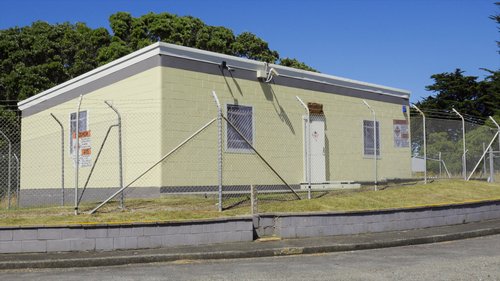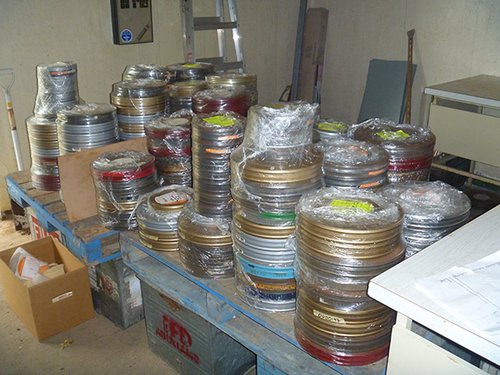
The new 100 square metre vault is shared by the two organisations, which will store nitrocellulose film there under controlled preservation conditions.
Nitrate film is fragile and needs a high level of care. This type of film is flammable and prone to deterioration over time. The new vault has been designed to prolong the life of nitrate films by slowing deterioration. As well as having built-in safety mechanisms, the environment inside the vault is well-suited for nitrate film storage – with a stable and closely monitored temperature and relative humidity.
Hero image: The vault – photographed at the early morning opening ceremony (photo by Jamie Lean).

It is important that our nation’s earliest films be safely stored in the digital era, as the rapid disappearance of film labs makes the repair and copying of physical film stock more difficult.
Nitrate film was the most commonly used film stock in New Zealand from the birth of film, until the end of the 1940s. Many of our most important film treasures were created on this format, including: the earliest surviving New Zealand film footage, The Departure of the Second Contingent for the Boer War (1900); government publicity films from the 1910s; dozens of our earliest kiwi home movies; groundbreaking New Zealand feature films such as Rudall Hayward’s My Lady of the Cave (1922) and Rewi’s Last Stand (1925); pioneering sound film experiments by kiwi Jack Welsh; the Weekly Review series of newsreels produced by the National Film Unit during the 1940s; and many more.
The Film Archive has 32 years of experience caring for nitrate films and a team of dedicated staff. Regular “wind-throughs” of the film reels have helped to keep the films in good condition. The practice of winding through the films gives vital clues about the general condition and prevents the build up of nitrous gasses.
The Film Archive’s nitrate film collection is continually growing as we work with other countries to repatriate New Zealand films from overseas.
We have also worked with archives abroad to return international films in our collections home. A number of early Hollywood films have found their way to us, because New Zealand was the end of the film distribution line and the studios typically didn’t invest in return freight for the films.

Preparing nitrate films for transport to the new vault (photo by Reiner Schoenbrunn).

Representatives from Ngāti Toa, along with Staff and Board members from both archives, gathered on the site overlooking Porirua Harbour for a pre-dawn opening ceremony on Friday February 28 (photo by Jamie Lean).